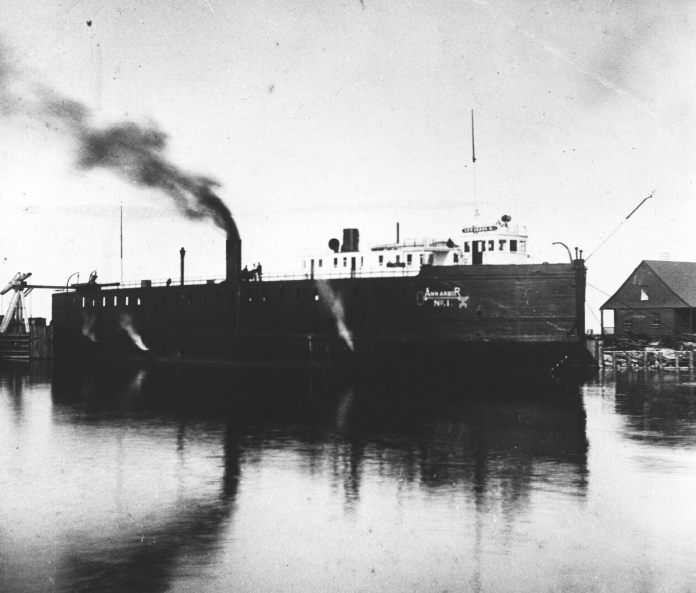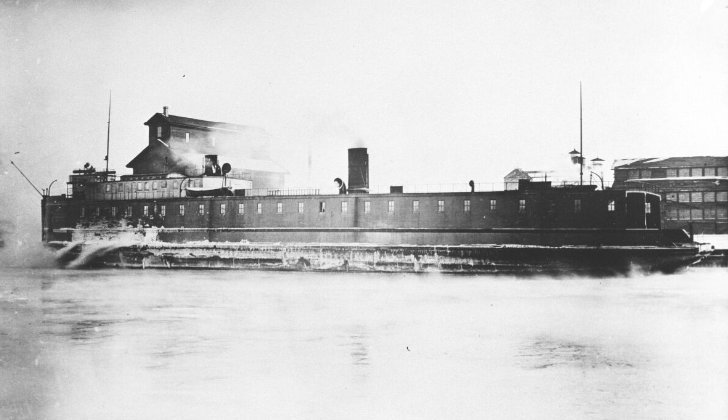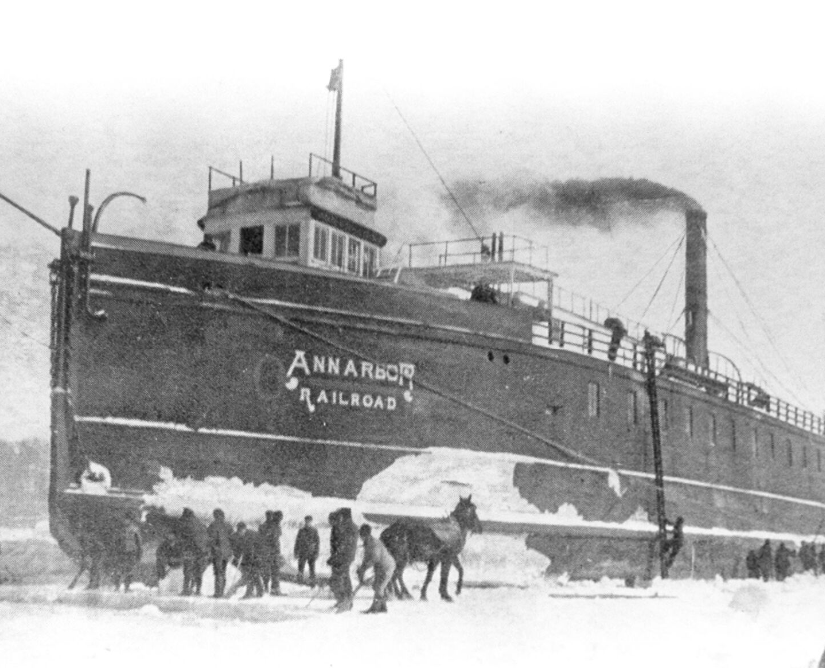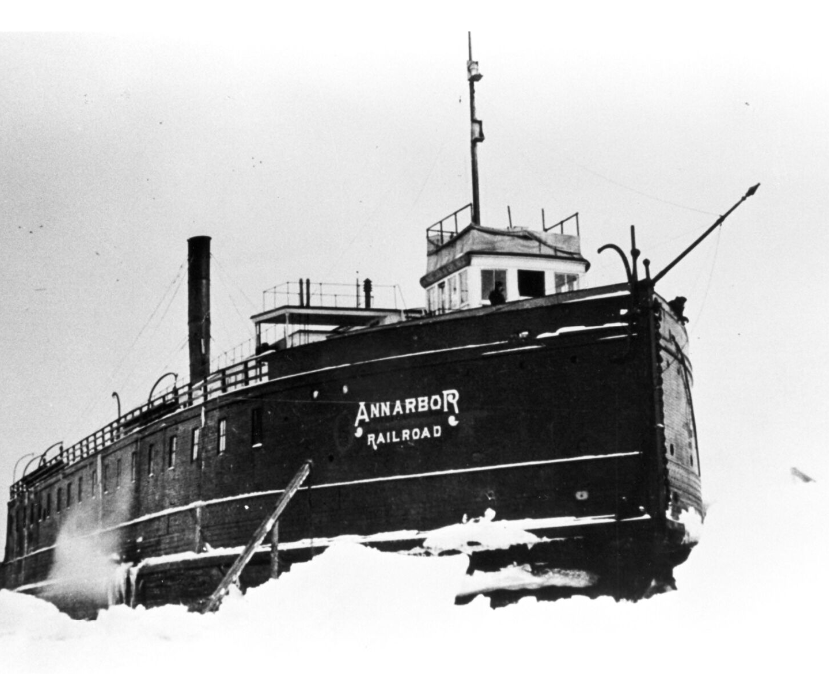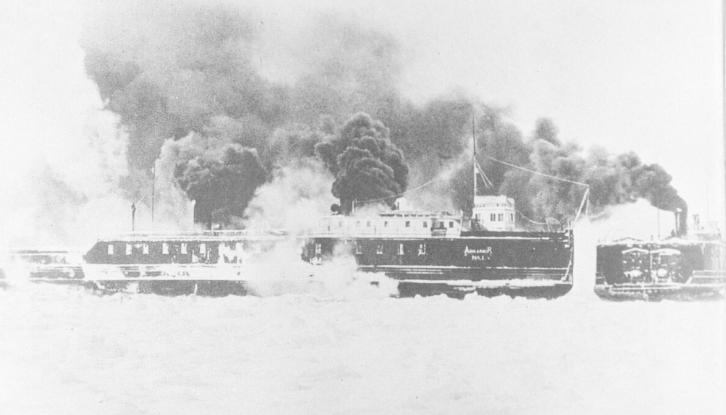Service History
Carferries appeared as a new vessel type on Lake Michigan in 1892, originally built to carry loaded railroad cars across the lake. The
Ann Arbor #1 was the first of its kind. Both the
Ann Arbor #1 and its sister ship, the
Ann Arbor #2, could carry 22 railroad cars. The
Ann Arbor #1, however, was built specifically for long trips over open water. It had four tracks on its deck, enabling it to carry 24 cars at a speed of 14 knots. The carferries on Lake Michigan originally traveled year-round, so ice was a primary concern. As a result, it had an oak hull, with steel sheeting reaching up to four feet above the water line along with a bow propeller for breaking ice.
It was built for use by the Toledo, Ann Arbor, and North Michigan Railroad Company, owned by former U.S. congressman James M. Ashley. It was launched in September 1892 at Toledo, Ohio, by the Craig Shipbuilding Company. On its maiden voyage, it transported 22 railroad cars 60 miles from Kewaunee, Wisconsin, to Frankfort, Michigan, on November 27, 1892. The
Ann Arbor #1 served a long career with few serious mishaps. In 1907, it underwent repairs to the hull and machinery.
when at Manitowoc in March of 1910 she caught fire. She burned to a total loss in excess of $150,000.00. She was then towed to the breakwater and sunk. She was then later raised and the burned hull was sold in 1911. She then was rebuilt as a barge and used as a sandsucker.
Last Document of Enrollment Surrendered 3/31/1910, Grand Haven: "Vessel Lost"
Final Voyage
On March 8, 1910, the
Ann Arbor No.1 caught fire at the Chicago and Northwestern Railroad carferry slip in Manitowoc. It was laden with 27 railroad cars loaded with lumber. Captain B.F. Tulledge first observed the smoke originating from the forward end of the ship and immediately sounded the alarm. Despite efforts by the crew and the Manitowoc Fire Department, the fire engulfed the vessel. By noon of the following day, the
Ann Arbor #1 had burned to the waterline and was a total loss.
The vessel was estimated at $147,000 and cargo $34,000. It was towed out of the slip and sunk by the south breakwater in 15 feet of water, where a later unsuccessful attempt to salvage the engines was made. In 1911, the Coast Guard considered the vessel to be a menace to navigation and ordered it removed. On June 9, 1911, the Smith Wrecking Company from Muskegon, Michigan raised the burnt and mangled hull, and delivered it to Muskegon, Michigan, to become a sand scow for the Love Construction Company.
Today
The hull of the
Ann Arbor #1 was removed from its original wreck site in 1911, as it was reportedly hazardous to navigation. The extent to which structural elements and artifacts related to the ship remain in Manitowoc Harbor is unknown. Some fragmented portions of the wreck may lie along the former south breakwater. Because historic sources don't specify where it was scuttled, the site is not mapped.
